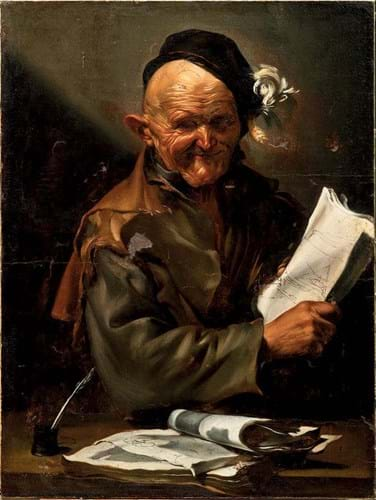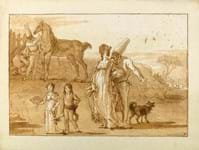
The 3ft 3in x 2ft5in (1m x 75.5cm) oil on canvas depicts an elderly man holding a sheaf of papers covered in formulae and geometric shapes and is thought to be an allegory of knowledge depicting a mathematician or philosopher.
It has been authenticated by Stéphane Pinta of the Old Master experts Cabinet Turquin, as a youthful work of the Spanish-born artist dating from the period when he was in Rome, c.1610, at the same time as Caravaggio – another artist of the Counter Reformation – was in residence.
The painting will be offered by Daguerre at an auction at Drouot on March 27. The estimate is €200,000-300,000.
The painting was hitherto unknown and represents a significant addition to the artist’s oeuvre from this early period which is the object of recent research on Ribeira. A key to attributing the painting was the identification of the distinctive model, an elderly wizened-featured man, as the same one used by Ribeira in six other works from his Roman period including a Saint Bartholemew now in Florence and The Denial of Saint Peter in Rome.
The painting, which is a half-length portrait measuring 1m in height, is also of the same size and format as one of the artist’s first commissions in Rome, a series of portraits of apostles.
Ribeira’s handling of his subject is also novel – he depicts his mathematician not as a traditional noble-featured white bearded ancient savant but as a grinning man in ragged clothes. It is thought to have been executed when the artist was only around 20.














